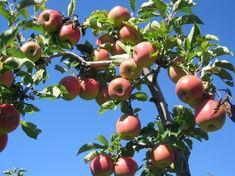
New Zealand apple growers are forecasting their best crop in years.
Pipfruit New Zealand announced the top-fruit export crop estimate for 2009 on Wednesday, indicating that a larger volume than last season, of more than 17 million cases, is likely.
Peter Beaven, chief executive of the industry body, said: “We are excited about the prospects for the 2009 export season. All growing regions are reporting a strong flowering, followed by a warm spring and low disease pressure. This has resulted in good-sized fruit with high eating quality.”
The total export crop is predicted to be 17.2m cases (309,000 tonnes), representing an increase of 16.5 per cent over the 2008 crop. Of this volume, 318,000 cases - just two per cent - are pears.
Producers are already gearing up to start their season. Beaven told freshinfo: “Judging by the stonefruit season, we think the harvest is likely to be anything up to a week earlier than usual. That means that most growers will start harvesting Royal Gala in the second week of February.”
This season will also see further evolution in New Zealand’s variety profile. Although Royal Gala and Braeburn still account for the lion’s share of output at 64 per cent of the total export crop estimate, their proportion has fallen from 76 per cent just three years ago. These two stalwarts now make up only 53 per cent of plantings, as they are steadily being replaced by Jazz, Pink Lady and Tentation. These three licensed types are seeing their plantings rise by 71, 15 and 52 per cent respectively.
New Zealand’s growers are keeping a careful eye on their export markets as they wait eagerly for northern hemisphere supplies to clear. Beaven said: “There are two dynamics having an effect on the UK market. Increased UK apple supplies this year and the loyalty being shown means there is domestic supply in the market for longer, and the reduction in the value of sterling against the euro means prices for imported fruit are much higher in UK pounds. In terms of the exchange rate, [markets in] the eurozone are far more attractive to us, but the NZ dollar is pretty stable year on year against sterling and the UK market is very important for New Zealand supplies. Our range of varieties - Gala, Braeburn, Pink Lady and, of course, Cox - have a home in the UK.”
As well as any possible overhang in the market from European and North American suppliers, New Zealand will also be monitoring volumes of fruit arriving from southern hemisphere competitors in its key markets. Pipfruit NZ will meet with representatives of the global apple industry at Fruit Logistica next week, under the auspices of the World Apple & Pear Association, to share information.
Beaven added that an important feature of the 2009 crop is the increased commitment of NZ apple and pear growers to meet market demands for safe fruit. The industry’s three-year Apple Futures programme, aiming to achieve zero-residue production, is only in its second year, but already covers half the crop.
He said: “I am confident that the success of this programme will maintain New Zealand producers’ place at the head of low-input, high-quality technology. This programme confirms the New Zealand apple and pear industry’s commitment to developing safe and sustainable growing practices. New Zealand producers are accustomed to commanding premium prices in world markets due to our safe, high-quality fruit and modern variety mix.”
Yields per hectare are high: an average of 54t gives New Zealand a productivity ranking that is the envy of any other production country worldwide.
The largest percentage of this year’s export volume will come from Hawke’s Bay, which will account for 63 per cent of the crop. Product from the Nelson area is forecast to increase slightly to 5.1m cases, some 30 per cent of the national crop.






No comments yet